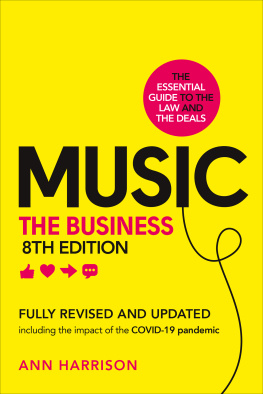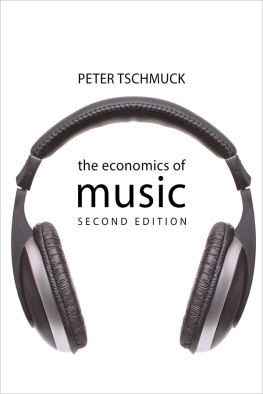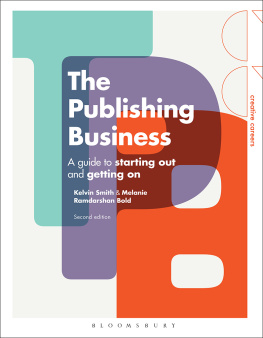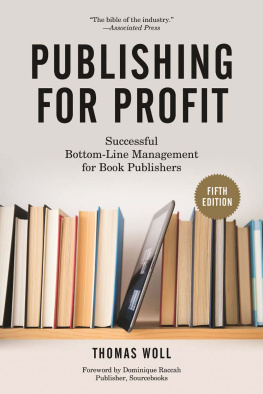Albert N. Greco
The Book Publishing Industry
The Book Publishing Industry
Second Edition
This page intentionally left blank
The Book Publishing Industry
Second Edition
Albert N. Greco
Fordham University
ZZJL LAWRENCE ERLBAUM ASSOCIATES, PUBLISHERS 2005 Mahwah, New Jersey London
Copyright 2005 by Lawrence Erlbaum Associates, Inc.
All rights reserved. No part of this book may be reproduced in any form, by photostat, microform, retrieval system, or any other means, without prior written permission of the publisher.
Lawrence Erlbaum Associates, Inc., Publishers 10 Industrial Avenue Mahwah, New Jersey 07430
Cover design by Kathryn Houghtaling Lacey
Pearson Education, Inc. previously published this book.
Library of Congress Cataloging-in-Publication Data
Greco, Albert N., 1945-
The book publishing industry / Albert N. Greco. 2nd ed. p. cm.
Previous ed.: Boston : Allyn & Bacon, cl997 Includes bibliographical references and index.
ISBN 0-8058-4852-5 (cloth) ISBN 0-8058-4853-3 (pbk.)
1. Publishers and publishingUnited States. I. Title.
Z471.G74 2004b
070.50973dc22 2003069607
CIP
Books published by Lawrence Erlbaum Associates are printed on acid-free paper, and their bindings are chosen for strength and durability.
Printed in the United States of America 10 987654321
Contents
This page intentionally left blank
Preface
What is the structure of the book publishing industry in the United States? What do publishers and editors do in the publishing value chain? Are net publishers revenues and profit margins unimpressive? Are consumers reading fewer books, triggering declines in net publishers unit sales? Will Internet book-selling sites undermine, and ultimately drive out of business, traditional chain and independent bookstores? Can authors make a living writing books? Will print-on-demand books replace traditionally printed books? Will print-on-demand kiosks replace bookstores and other retail establishments as the primary source of books? In essence, is the econometric state of publishing as bleak as some individuals have speculated?
Clearly, there are concerns about the well-being of this pivotal industry. Anyone familiar with book publishing knows all too well that the economics of publishing are harsh and unforgiving, prompting some analysts to insist that publishing is in disarray because of: (1) consolidation, steep returns, stark sales figures, and a fickle and price-sensitive consumer base; (2) the impact of chains, superstores, and price clubs (and the concomitant decline of independent book stores); (3) a population more interested in watching television than reading books; (4) paper-thin profits; (5) staggering technological challenges; and (6) some author advances that dumbfounded even seasoned industry veterans.
Publishing is unquestionably at a crossroads, on the cusp of great opportunities. This industry has vitality and spirit, the ability to find and develop new talent. Of course publishing houses open and close, as do bookstores, and old, well-mined literary niches become a bit frayed over the years. Yet this industry has the ability, an almost mystical one, to reinvent itself, to shrug off disasters, and to remain a formidable influence helping people, from young children to immigrants, learn about their past, understand their present, and ponder their future.
Book publishing will survive in its current, print-oriented format for at least 20 years and, ultimately, in an electronic format, for centuries to come. This industrys great traditions, and its unyielding, and at times undisciplined, quest for perfection, enables it to handle effectively depressions, recessions, technological convergence, war, and social upheavals. After all, books matter and endure in the short run, and more likely in the long run, far more than insubstantial
television situation comedies, trendy motion pictures, and long-forgotten magazine or newspaper articles.
This revised edition of The Book Publishing Industry updates a significant portion of the text as well as all statistical datasets through 2002 (in many cases with projections through 2007). In addition, a new appendix was added containing rarely seen historical data on the industry (basically data from 1946 to the end of the century). The selective bibliography was updated to include the latest literature, especially major works in marketing and economics that have a direct relationship with this changing industry. Although consumer books (i.e., adult, juvenile, and mass-market paperbacks) remain the central focus of the book, all of the major book categories are reviewed to insure that readers gain an overview of this eclectic business.
ACKNOWLEDGMENTS
This book became a reality because of the continued support of a number of individuals in and out of the publishing industry.
My wife Elaine provided me with the encouragement (as well as keen editorial advice) to complete this task. Numerous discussions with my sons Albert and Timothy (both in sales and marketing departments at Random House) filled in many gaps about what really happens in the sales and marketing trenches. My other sons, John and Robert, constantly asked me questions about the industry, prodding me to develop realistic answers about a complex maze of issues, a fact Teresa observed firsthand as the wife of a sales manager. Some day Gabrielle, Olivia, and Nicolette will also wonder about this often-contradictory cultural and commercial endeavor.
Probing, candid talks with Bob Wharton, Sharon Smith, and Arthur Kover provided insight into the human condition, ethics, and managerial ideas.
Discussions about media economics with Robert Picard broadened my understanding of this vital field.
Linda Bathgate and her colleagues at Lawrence Erlbaum Associates were a source of ideas, inspiration, and exceptionally useful editorial advice.
I must also thank a number of book publishing academics and professionals who offered comments and assistance. The Book Industry Study Group, Inc. and the Association of Research Libraries were kind enough to allow me to use some of their statistical data in this book, as did Leo Kivijarv, R.R. Bowker, Veronis Suhler Stevenson, Stephanie Oda at Subtext, Dave Bogart from The Bowker Annual, and Gary Ink at Publishers Weekly Philip G. Altbach (Boston College) and Edith S. Hoshino allowed me to use some of my material on book industry mergers and acquisitions that originally appeared in International Book Publishing: An Encyclopedia.
The exceptional staff at the Fordham University Library and the Bergenfield, New Jersey, Public Library helped me gather innumerable books and articles about publishing, libraries, and the information industries. They demonstrated why libraries must be supported in this nation.
I must also thank John Sterling and Michael Kay for their insightful comments about another business that rivals book publishing in its majestic scale and dramatic flair.
As always, I must thank that small group of people in the Bronx (at 161st and River Avenue) who inspire many of us to try harder whatever the obstacles, especially on those chilly nights in October.
We also remember those brave people who died on September 11,2001, in a terrorist attack on the Pentagon and in that field in Pennsylvania.
All of us working in New York City on September 11th will never forget the thousands of people killed at the World Trade Center and, especially, the efforts of our mayor and the heroic members of the NYPD, the FDNY, and the PAPD.
On that day in New York City, all gave some; some gave all.
This page intentionally left blank
The Book Publishing Industry
Second Edition
This page intentionally left blank
CHAPTER ONE
Next page





